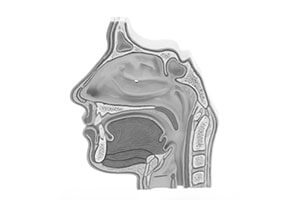 It is estimated that more than 40,000 Americans will be diagnosed with oral or pharyngeal (throat) cancer in 2013, resulting in almost 8,000 deaths. The death rate for oral cancer is higher than that for cancer of the cervix, brain, liver, testes, kidney and ovaries, Hodgkin disease or malignant melanoma (skin cancer).
It is estimated that more than 40,000 Americans will be diagnosed with oral or pharyngeal (throat) cancer in 2013, resulting in almost 8,000 deaths. The death rate for oral cancer is higher than that for cancer of the cervix, brain, liver, testes, kidney and ovaries, Hodgkin disease or malignant melanoma (skin cancer).
Risks for Oral Cancer
Most people are older than 40 when they are diagnosed with oral cancer. There have been links found between “smokeless” chewing tobacco (spit tobacco) and oral cancer. At least 75 percent of those diagnosed with oral cancer are tobacco users, whether they smoke it or chew it. Additionally, the combined use of alcohol and tobacco causes the risks for developing oral cancer to increase. Prolonged exposure to sunlight may be a cause of cancer of the lip. The Human Papilloma Virus (HPV), specifically strains 16 and 18, has been linked to oral cancer. A diet low in fruits and vegetables has been shown to be a risk factor, as have poor oral hygiene and ill-fitting dentures.
Self-Examination for Oral Cancer
Self-exams should be performed on a monthly basis, and using the following steps:
- Remove any dentures
- Look at and feel the inside of the lips, and the front of the gums
- Tilt the head back to look at and feel the roof of the mouth
- Pull out the cheek to see its inside, and look at the back gums
- Pull out the tongue and look at all surfaces
- Feel both sides of the neck and under the lower jaw for lumps or enlarged lymph nodes
Symptoms of Oral Cancer
The following may be symptoms of oral cancer:
- White or red patches of tissue in the mouth
- Small ulcers that may look like canker sores
- Lumps or masses that can be felt inside the mouth or neck
- Pain or difficulty swallowing, speaking or chewing
- Wart-like masses on the oral or facial region
- Hoarseness that lasts for a significant period
Sores that do not heal within 14 days should be checked by a dentist.
Oral Cancer Screening and Biopsies
Your dentist evaluates your teeth and mouth for any indications of oral cancer. Normally, the inside of the mouth appears pink and smooth and certain changes, within the mouth, may indicate an abnormality that should be treated immediately. Some of these changes may include:
- Red or white patches in the mouth
- Sores that do not heal and/or bleed easily
- Thickening of the skin inside the mouth
- Difficulty swallowing or chewing
A biopsy is performed to remove a sample of tissue from a solid mass to determine whether it is malignant or benign. In an incisional biopsy, a portion of the mass is removed for examination, and in an excisional biopsy, the entire growth is removed.
Pathology – Tumor Removals
Oral cancer surgery involves the removal of the cancerous tissue and some of the surrounding healthy tissue to ensure thorough eradication of the disease. Oral cancer surgery may cause swelling and bruising affecting the patient’s ability to chew, swallow or talk. Often, chemotherapy is administered after surgery using medication that targets cancer cells over repeated treatment sessions. Similarly, radiation therapy may also be used to destroy cancer cells.
